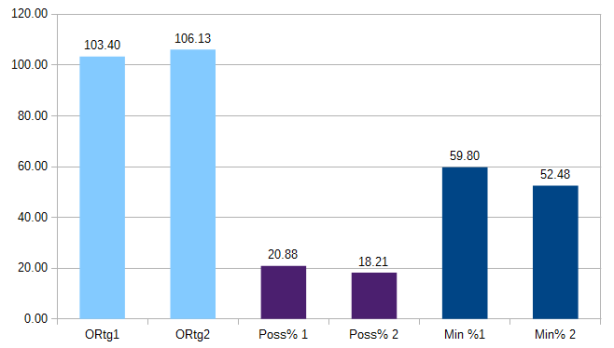Alright, now that we've got the Coaches' Viewpoint out of the the way, let's talk about transfers. Player movement in college basketball is seemingly at an all-time high. That's been a theme for several seasons now, and it might best be exemplified by the relatively new, but still rapidly expanding, graduate transfer loophole, which allows any player with an undergraduate degree and eligibility left to transfer to a new school, free from the restraints of the "year in residence" the NCAA requires traditional transfers to sit out from competition.
The appeal is easy to see. Big-time programs can poach from lesser ones with somewhat proven commodities who can come in immediately and address needs, almost certainly faster than the lightly recruited high school players still floating around in the spring after the season ends. But one question remains - just how effective are these players when they move to their new schools.
Using Luke Winn's outstanding research as a starting point and filling some gaps with Jeff Goodman's exhaustive transfer list, I put together a list of players who used the graduate transfer exemption to transfer "up" over the last four seasons, where transferring up is defined (by Winn) as going from a mid or low-major to a power conference school, or transferring from a major program to a blue blood.
The graduate transfer exception has been used by major programs at every level. While Duke hasn't dipped their toes into the water just yet, North Carolina, Kentucky, and Kansas all have, and UCLA attempted to bring in Jon Octeus from Colorado State before he was denied admission and wound up at Purdue. 2012 National Champ Louisville will bring in its first graduate transfer in Cleveland State's Trey Lewis.
Oregon and Boston College have brought in the most grad transfers at four apiece, followed by Illinois, Purdue, Tennessee and Fred Hoiberg's transfer factory, Iowa State at three each. Auburn, Indiana, Maryland, UConn, USC and Wake Forest have all brought in multiple grad transfers. UConn just locked up its third in former Cornell Forward Shonn Miller, and Maryland is trailing Damion Lee, the star of this year's transfer menu.
By and large, these players are performing well when they move up a level. Taking out of the equation a few players like Jon Horford (Michigan to Florida) and Justin Knox (Alabama to North Carolina) who already had power conference experience, I looked at the year-to-year changes after players moved to the big-time, focusing on three categories: ORtg (to judge efficiency), Poss% (to judge how involved they were) and Mins% (to see if they were more than benchwarmers).

So that's promising. ORtg actually increases at the higher level in season 2, although that's offset by a drop in usage and playing time. You probably need to be a little careful in projecting this out going forward since we don't know what the increased pool of graduate transfers will do to the quality of that pool. If schools are currently drawing a random sample from, say, the top 5% of mid-major and low-major players, will they draw more players from that same pool or reach down further in the hopes of landing a one year band-aid. Tough to say, but I'd guess the latter happens a bit more frequently as the grad transfer continues to proliferate.
And here's the list for reference.
